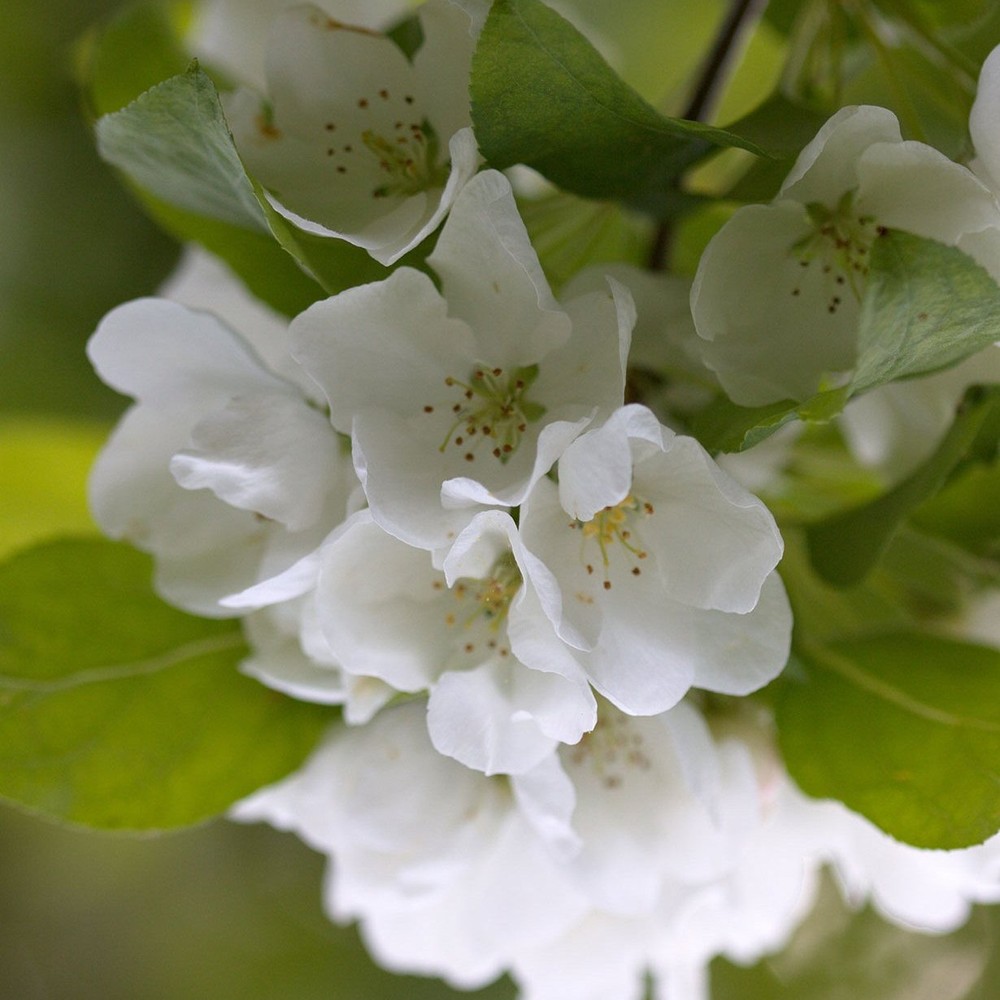Siebold's crabapple
(Malus sieboldii sieboldii)

Description
Malus sieboldii, also known as Siebold's crabapple or Siebold's apple, is a species of flowering plant in the family Rosaceae. It is native to Japan, where it is commonly found in deciduous forests, on hillsides, and along streams. This species is known for its attractive and ornamental qualities, making it a popular choice for landscape design and gardening. Description Malus sieboldii is a small deciduous tree or large shrub that typically grows up to 10 meters tall, with a crown that can reach up to 6 meters in diameter. The bark of the tree is grayish-brown and develops shallow vertical fissures as it ages. The leaves are simple, alternate, and ovate in shape, measuring around 5-10 cm long and 3-5 cm wide. They are dark green in color with a glossy texture, and turn yellow or orange-red in the autumn. The flowers of M. sieboldii are pinkish-white and bloom in clusters of 3-5 from late April to early May. Each flower measures around 2 cm in diameter and has five petals. The fruits of the tree are small, measuring around 1-2 cm in diameter, and are round or oblong in shape. They are green when young and turn yellow or red as they mature in the autumn. Cultivation M. sieboldii is a hardy plant that is tolerant of a range of growing conditions. It prefers well-drained soil that is rich in organic matter, but can tolerate sandy or clay soils. The plant is also tolerant of drought and can survive in areas with low rainfall. It prefers full sun to partial shade and is sensitive to strong winds. Propagation of M. sieboldii is typically done by seed or by grafting. Seeds should be stratified for 3-4 months before planting in the spring. Grafting is done in the winter or early spring using scions taken from a desired cultivar. Uses M. sieboldii is commonly used in landscaping and gardening for its ornamental qualities. The tree is often used as a specimen tree or in mixed borders, and its small size makes it suitable for small gardens or urban areas. The pinkish-white flowers are attractive and fragrant, and the autumn foliage adds a splash of color to the landscape. The fruits of M. sieboldii are edible but are generally considered too sour to be eaten raw. They can be used to make jams, jellies, and other preserves. The tree is also sometimes used in traditional medicine for its astringent properties. Cultivars There are several cultivars of M. sieboldii that are prized for their ornamental qualities. Some of the most popular cultivars include: 'Calocarpa': This cultivar is known for its bright red fruits that persist well into the winter. 'Golden Hornet': This cultivar has yellow fruits that are a striking contrast against the dark green foliage. 'Liset': This cultivar has pinkish-white flowers and bright red fruits that persist well into the winter. 'Tina': This cultivar is a dwarf variety that grows to around 1 meter tall, making it suitable for small gardens or containers. Conclusion Malus sieboldii is a beautiful and versatile plant that is prized for its ornamental qualities. Its pinkish-white flowers, attractive foliage, and edible fruits make it a popular choice for landscaping and gardening. With its hardiness and tolerance for a range of growing conditions, this species is a great choice for anyone looking to add a splash of color and beauty to their outdoor space.
Taxonomic tree:







